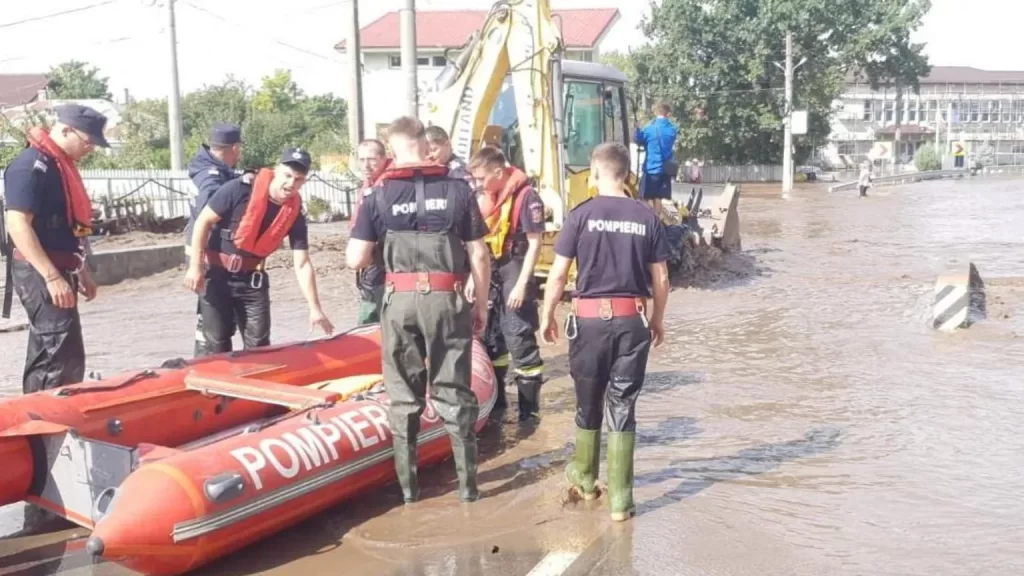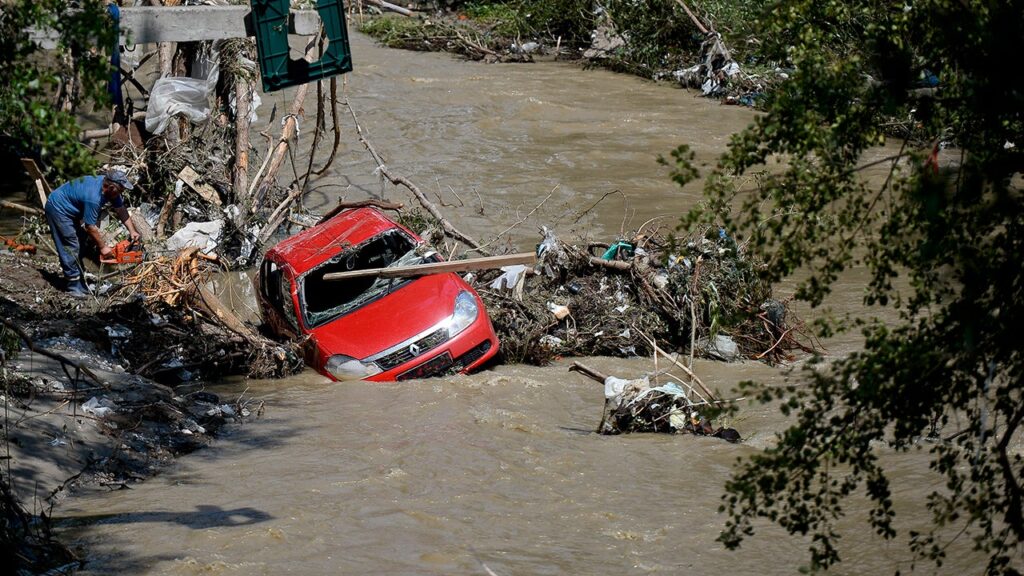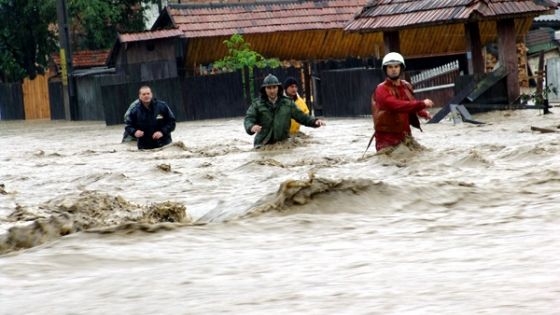Torrential rains and subsequent flooding have claimed four lives in Romania, as a powerful weather system continues to wreak havoc across Central and Eastern Europe, officials reported Saturday.

The Romanian emergency services confirmed to AFP that four people were found dead in the southeastern region of Galati during search and rescue operations. “Dozens of people were rescued from their homes in 19 areas of the country,” they added, highlighting the widespread impact of the flooding.
The severe weather, attributed to Cyclone Boris, has affected multiple countries since Thursday, bringing strong winds and heavy rainfall to Poland, Austria, the Czech Republic, Hungary, Romania, and Slovakia.
In the Czech Republic, authorities have declared the highest flood alert in 38 locations. Prague, the capital, has activated its flood defenses, raising barriers and closing embankments to the public. The city’s zoo has also been shut down as a precautionary measure, evoking memories of the devastating floods in 2002 that saw elephants drowning in the inundated facility.

Poland is also grappling with rising river levels, prompting evacuations in some areas. Interior Minister Tomasz Siemoniak described the situation in the small towns of Morow and Glucholazy, near the Czech border, as particularly dangerous. In Glucholazy, the river has exceeded safe levels by two meters, forcing residents of nearby streets to evacuate.
“We have a difficult situation in four rivers, potentially threatening evacuations and damage in several towns,” Siemoniak stated, underscoring the widespread nature of the threat.

The Czech capital, Prague, is taking extensive precautions to prevent a repeat of the catastrophic floods of 1997 and 2002. A network of flood defenses, costing over €1 billion (£845 million), has been activated, including the closure of the Devil’s Canal in the historic Mala Strana district.
In Austria, the Geosphere Austria federal institute reported that August was the hottest on record, with current forecasts warning of 10-20cm of rainfall in many regions over a matter of days. Some mountainous areas could see over 20cm, prompting concerns about flooding and landslides.
German authorities in Bavaria are also bracing for continuous heavy rain, as the weather system moves westward.

Climate experts note that extreme precipitation events are becoming more likely in Europe due to climate change. A warmer atmosphere can hold more moisture, leading to heavier rainfall and increasing the risk of severe flooding.
As the situation continues to evolve, emergency services across the affected countries remain on high alert, with further evacuations and flood defense measures likely in the coming days. The ongoing crisis serves as a stark reminder of the increasing challenges posed by extreme weather events in the region.



